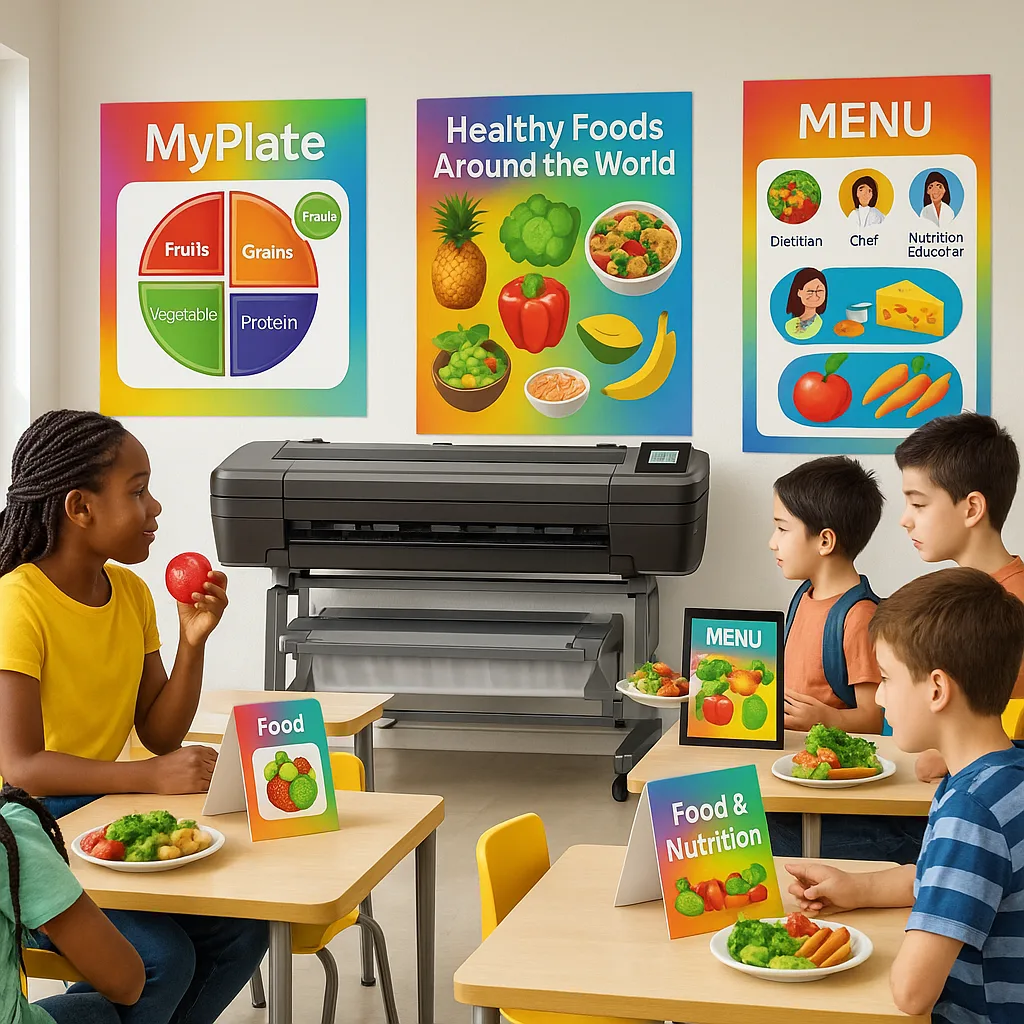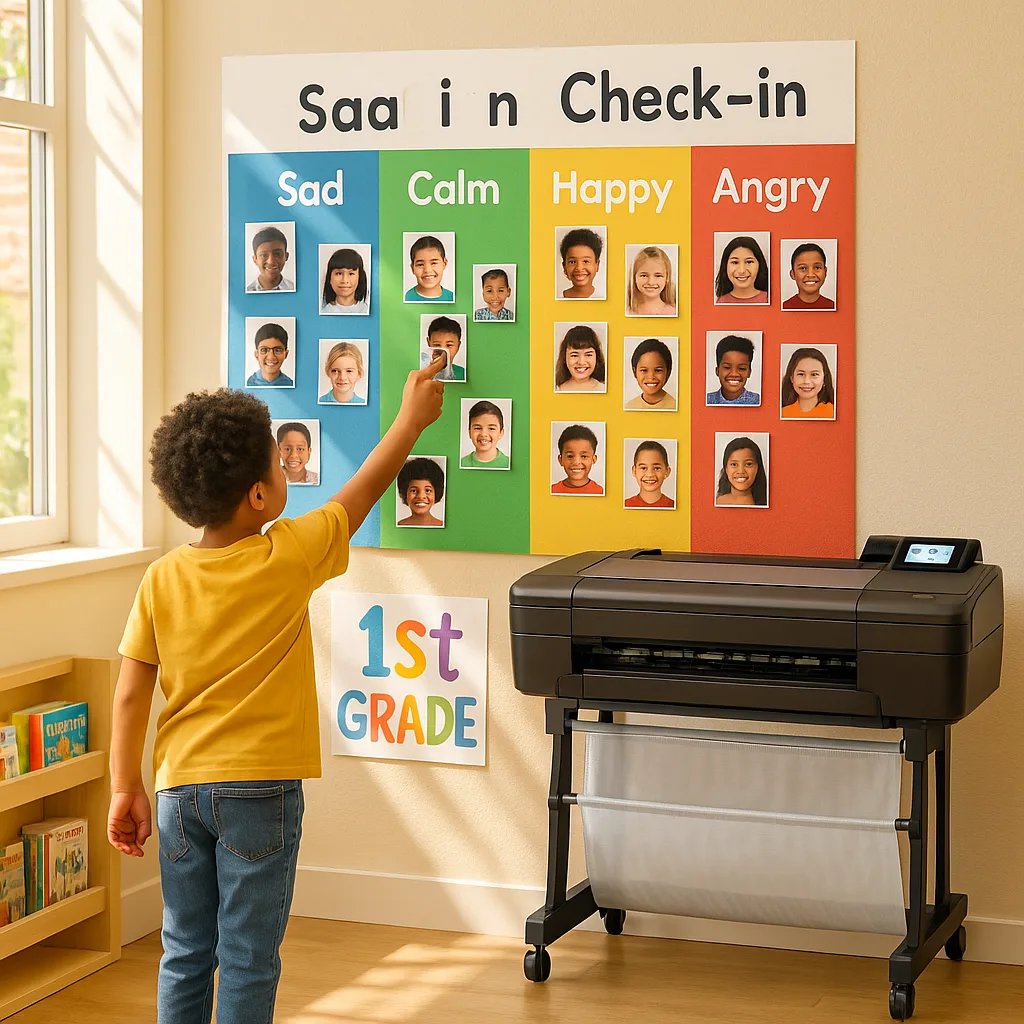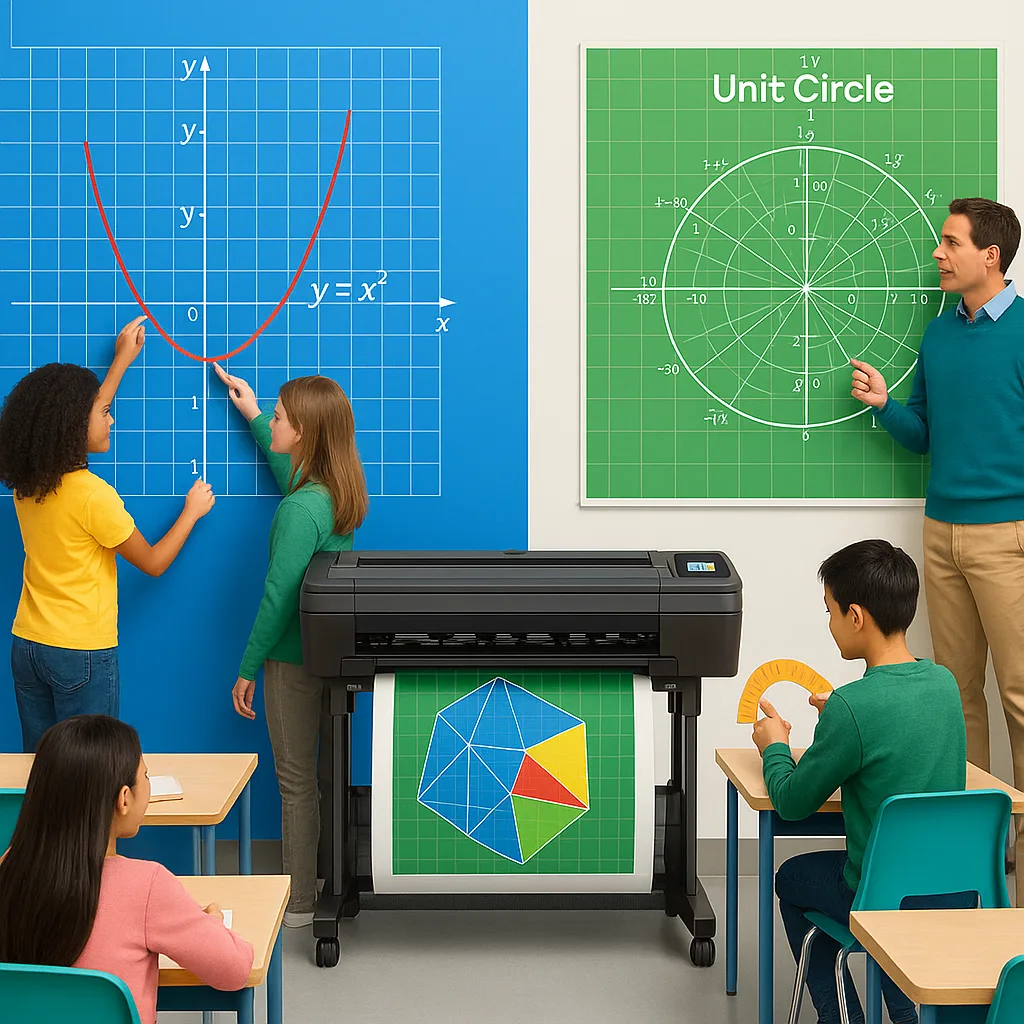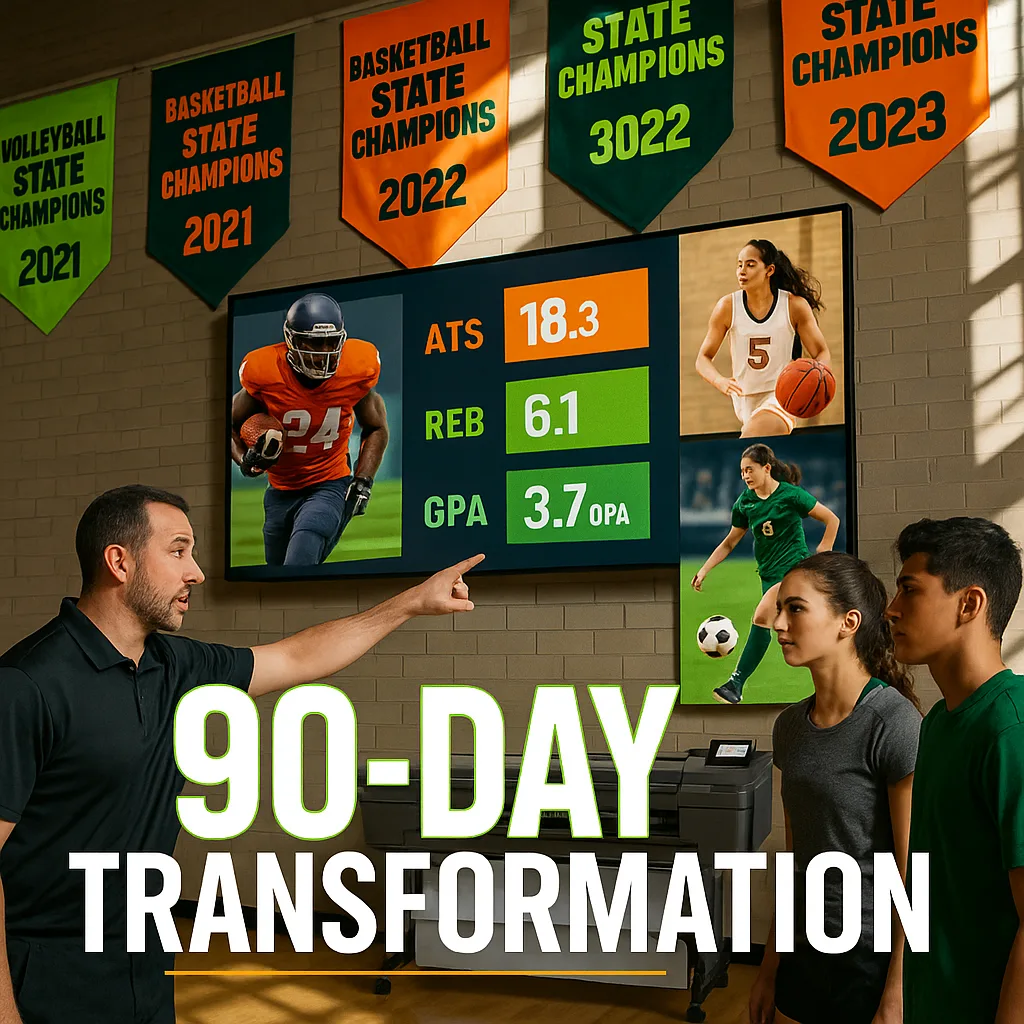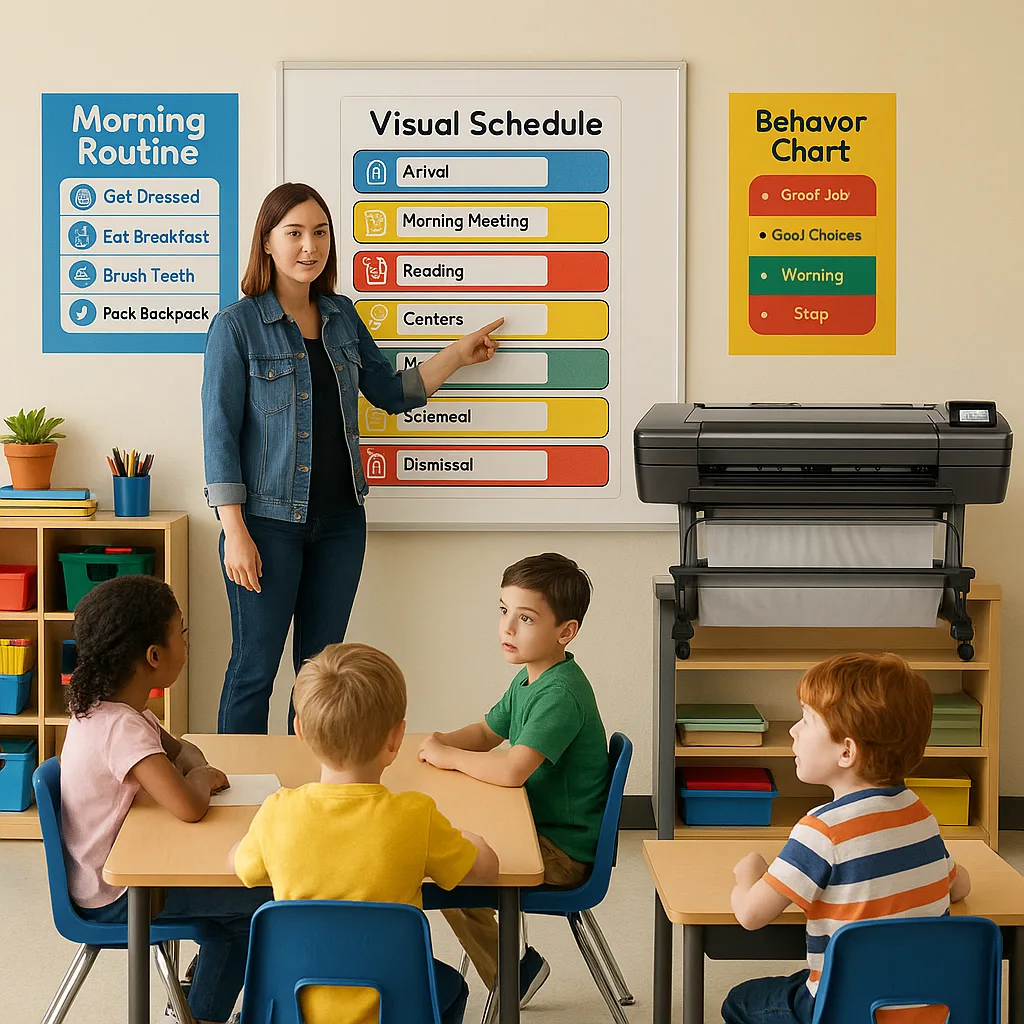
Picture this: It’s Monday morning, and your student with ADHD is already bouncing off the walls, unable to find their homework folder, forgetting the morning routine, and disrupting others as they search for supplies. Sound familiar? What if I told you that a simple poster printer for schools ADHD supports could transform this daily chaos into a calm, productive start to the day?
Transform Executive Function Challenges with Visual Support Systems
After 15 years in K-3 classrooms and now supporting 22 schools as a literacy coach, I’ve witnessed countless “lightbulb moments” when visual supports click for students with ADHD. These aren’t just pretty wall decorations – they’re lifelines for children whose brains process information differently. Today, I’m sharing evidence-based strategies that have transformed my most challenging classroom situations into success stories.
The Science Behind Visual Support Systems for ADHD
Research from the Children and Adults with Attention-Deficit/Hyperactivity Disorder (CHADD) shows that students with ADHD process visual information 60% faster than text-based instructions. This isn’t surprising when you understand that ADHD affects the brain’s executive function center, making it harder to:
• Filter out distractions
• Organize thoughts and materials
• Remember multi-step directions
• Manage time effectively
• Transition between activities
Visual supports act as external executive function aids, doing for the brain what glasses do for the eyes. They provide consistent, clear pathways for success that don’t rely on working memory or verbal processing – two areas where many students with ADHD struggle.
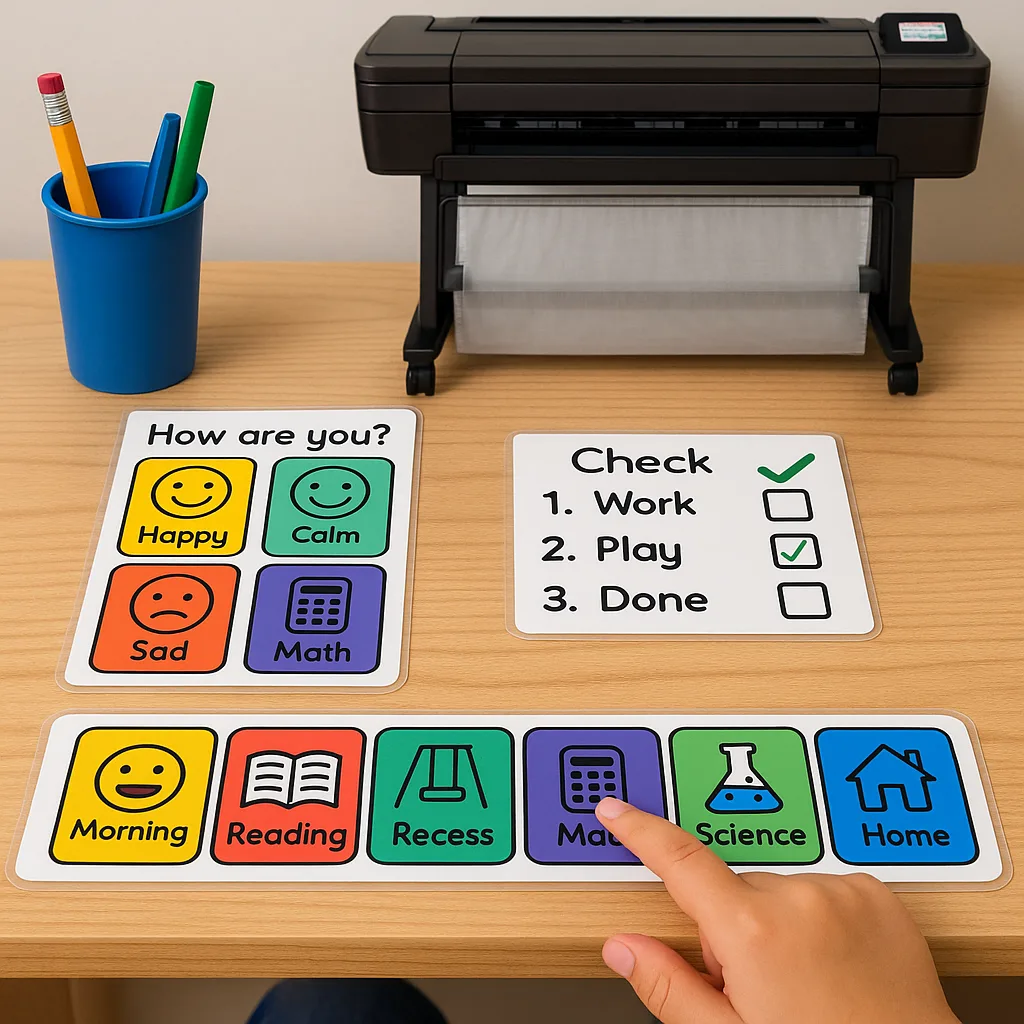
Essential Visual Supports Every ADHD-Friendly Classroom Needs
Let me share the five game-changing visual support categories that have made the biggest difference in my schools:
Morning Routine Posters
Implementation Tips
Start every day with success using step-by-step visual guides.✓ Unpack backpack
✓ Turn in homework
✓ Choose lunch
✓ Begin morning work
Time Management Visuals
Why They Work
Visual timers and schedules reduce anxiety and improve focus.• Color-coded daily schedules
• Visual countdown timers
• “Time remaining” displays
Strategic Poster Placement: Where Visual Supports Work Best
Location matters just as much as content when it comes to visual supports. Through trial and refinement (and yes, some spectacular failures!), I’ve discovered the optimal placement strategies that maximize impact while minimizing distractions:
Eye-Level Excellence
Place routine posters at student eye level – not adult height. For K-3 students, this means 36-48 inches from the floor. Students with ADHD often have tunnel vision when stressed, so keeping supports in their natural sightline increases usage by up to 80%.
Transition Zones
Position behavior reminders and calming strategies near doorways, cubby areas, and other transition points. These high-stress areas are where students most need visual cues to self-regulate.
Personal Space Power
Create individual visual support cards that students can keep at their desks. Using a poster printer for schools, you can easily produce durable, wipeable desk strips with personalized schedules, behavior goals, or coping strategies.
The Quiet Corner
Establish a calm-down area with visual breathing exercises, emotion identification charts, and step-by-step self-regulation guides. This becomes a safe space where overwhelmed students can reset using visual supports.
Evidence-Based Design Principles That Work
Not all visual supports are created equal. After analyzing which posters students actually use versus ignore, I’ve identified key design principles that make the difference:
Contrast is King
High contrast between background and text improves readability by 40% for students with ADHD. Think black text on yellow backgrounds or white text on deep blue – combinations that grab and hold attention.
Less is More
Limit each poster to one main concept with no more than 5-7 steps or items. Overwhelming visuals defeat their purpose. When in doubt, break complex routines into multiple smaller posters.
Icons + Words = Success
Pair every text instruction with a simple icon or image. This dual coding helps students who struggle with reading or processing written language quickly understand expectations.
Color Coding Consistency
Use the same color associations throughout your classroom. If math is always blue and reading is always red, students build automatic associations that reduce cognitive load.
Reduction in classroom disruptions when visual supports are properly implemented
Creating Your Own ADHD Support Posters: A Step-by-Step Guide
Ready to transform your classroom? Here’s my proven process for creating effective visual supports:
Step 1: Identify Pain Points
Track for one week: What instructions do you repeat most? When do students with ADHD struggle most? These are your poster priorities.
Step 2: Co-Create with Students
Involve your students in the design process. They’ll tell you what works and what doesn’t. Plus, ownership increases buy-in dramatically.
Step 3: Design with Purpose
Using design software or even simple tools like Canva with drag-and-drop functionality, create clean, clear visuals that follow the principles above.
Step 4: Print for Durability
This is where quality matters. Using a professional Education Express 24″ Poster Printer ensures your supports withstand daily use, sticky fingers, and frequent cleaning. The poster machine price pays for itself when you consider the hours saved not recreating damaged materials.
Step 5: Introduce Systematically
Don’t overwhelm students by adding 20 new posters at once. Introduce one or two weekly, teaching students how to use each support explicitly.
Step 6: Monitor and Adjust
Visual supports aren’t set-it-and-forget-it tools. Watch how students interact with them and be ready to modify based on what you observe.
Real Classroom Success Stories
Let me share two transformative examples from schools I’ve worked with:
Budget-Friendly Implementation: Making It Work Without Breaking the Bank
I know what you’re thinking: “This sounds amazing, but our budget…” Here’s the good news – implementing visual support systems doesn’t require a fortune. Let me break down the real costs and creative funding solutions:
Initial Investment vs. Long-Term Savings
While the upfront poster machine price might seem daunting, consider this: One Education Express 24″ Package A can produce hundreds of durable posters for about $1.30 each. Compare that to ordering pre-made posters at $15-25 each, and the savings add up quickly.
Funding Sources Often Overlooked:
• Title I funds specifically support interventions for at-risk students
• IDEA funds can cover supports for students with ADHD
• PTA/PTO grants often prioritize inclusive classroom tools
• Local business partnerships (they love supporting special needs initiatives!)
Start Small, Think Big
You don’t need to transform your entire school overnight. Start with one grade level or even one classroom as a pilot program. Document the results (reduced behavior incidents, improved task completion, teacher time saved) and use that data to justify expansion.
One second-grade team I coached started with a shared printer between four classrooms. Within one semester, their success data convinced the district to invest in poster printers for every elementary school.
Extending Support Beyond the Classroom: The Home-School Connection with Poster Printer for Schools ADHD Supports
Visual supports shouldn’t stop at the classroom door. Parents of children with ADHD desperately need the same tools at home. Here’s how to bridge that gap:
Parent Take-Home Packets
Create miniature versions of classroom visual supports that families can use at home. Morning routine charts, homework checklists, and bedtime sequences maintain consistency across environments.
QR Code Integration
Add QR codes to your posters that link to video demonstrations or additional resources. Parents can scan and access support strategies on their phones.
Family Workshop Nights
Host sessions where parents learn to create their own visual supports. Provide templates and access to the school’s poster printer during these events. The investment in family engagement pays dividends in student success.
Digital Sharing Platforms
Create a shared drive with printable versions of all classroom visual supports. Parents can access and print smaller versions at home, ensuring message consistency.
Your Next Steps: From Chaos to Calm
You’ve seen the research. You’ve heard the success stories. Now it’s time to transform your own classroom. Here’s your action plan:
Remember, every student with ADHD who finds success through visual supports is one less child struggling in silence. Your investment in proper tools and strategies today shapes confident, capable learners tomorrow. Let’s transform chaos into calm, one poster at a time.

